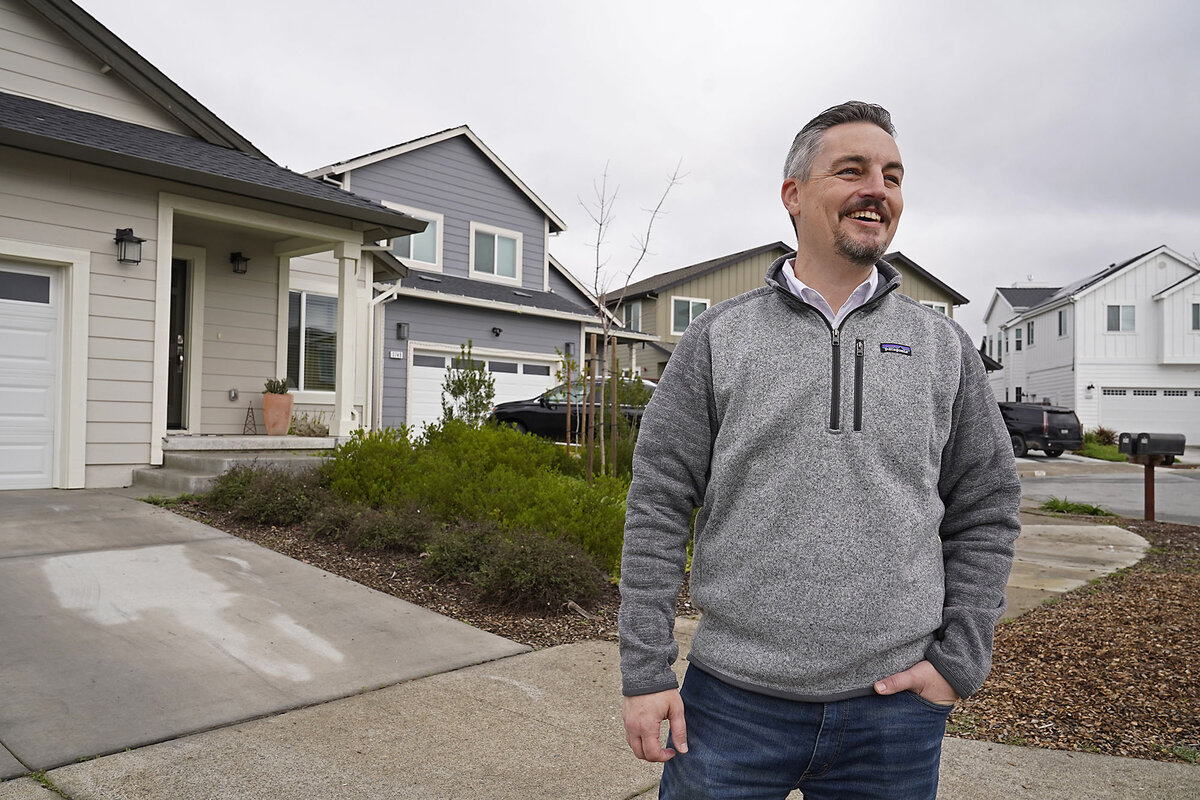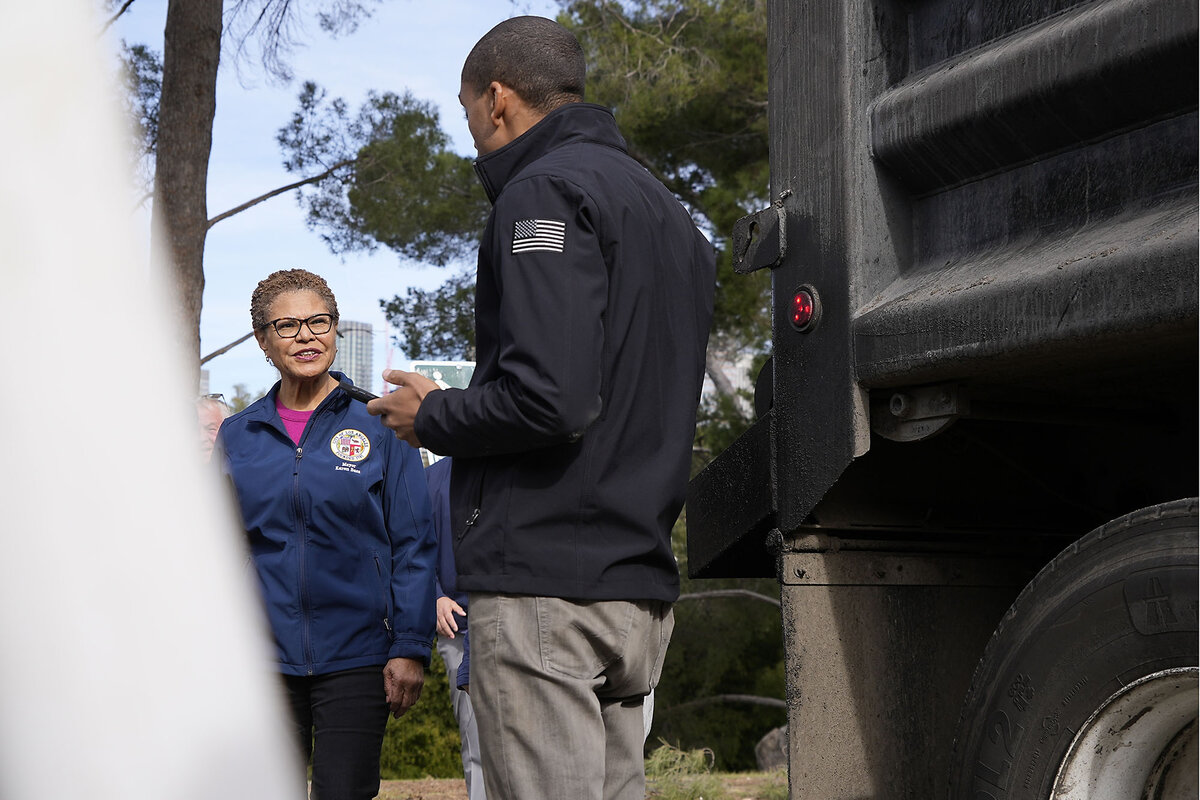LA fires left blank slate for rebuilding. Whose priorities will chart the path?
Loading...
| Los Angeles
Weeks after fires destroyed more than 16,000 structures in Greater Los Angeles, thousands of people are living where they can: in hotel rooms, in long-term rentals, with family or friends. Some have left for second homes outside the area. Still reeling from the devastation, they are starting to consider daunting choices: whether and how to rebuild their homes.
Already, a groundswell of experts and coalitions is emerging to inform the rebuild – each with their own ideas about how best to do it, taking into account climate resilience, energy efficiency, and quality of life.
Time is the pressing factor: As days turn into weeks, families’ immediate needs can overshadow community development goals. But rebuilding quickly and with objectives like resilience and efficiency doesn’t have to be mutually exclusive, says Amy Bodek, Los Angeles County’s director of regional planning.
Why We Wrote This
A story focused onLos Angeles wildfire destruction means homeowners and communities must decide how to rebuild – and everything is on the table. Competing interests are already at play.
The competing interests, she explains, are between homeowners and their communities. But they do overlap, “And we have to find that sweet spot that allows us to have both conversations at the same time,” she says.
Previous fires show how complicated that can be.
“On the clock” in Santa Rosa
In 2017, hurricane-force winds propelled the Tubbs Fire through Santa Rosa, California, wiping out more than 5,000 homes in this picturesque area about an hour north of San Francisco.
Many property owners were determined to rebuild as quickly as possible, but many were also underinsured. Government officials helped keep costs down by being flexible, says Gabe Osburn, Santa Rosa’s director of planning and economic development. They provided waivers for building codes, for instance, and allowed people to skip the architect phase by using plans already approved by the city.
Some fire resiliency costs proved prohibitive – such as switching from timber to concrete. Instead, Mr. Osburn says, homeowners made improvements on the margins by protecting roof vents from embers and planting fire-resistant vegetation. The city helped by offering landscape templates, saving owners on hiring a professional.
The flexibility built trust and also sped up the timeline. Within three years, 80% of houses in the once-gutted Coffey Park neighborhood were occupied. “We were really on the clock,” he says.
A new era
That same clock is ticking for people who lost their homes in the recent LA fires. Both the city and county will allow “like for like” rebuilding so owners can replace what they had where they had it. But by virtue of modernized safety codes and regulations, some rebuilds will be more fire resilient than the originals, depending on when those went up. In Altadena, where many of the destroyed homes were built before 1979, present-day requirements like indoor sprinklers and vents that close will help reduce fire risks.
Pricier additions – like solar panels or electric-only utilities – might require government or philanthropic assistance, explains urban planner Laurie Johnson. The best way to implement communitywide transformation is to have a plan already in place when disaster strikes.
“Otherwise, it’s up to individual actors” to determine which upgrades or efficiencies to add, says Ms. Johnson, who specializes in disaster recovery. But people, commissions, and special interest groups can be powerful negotiators, she adds. And multiple interests can align – as is happening with debris removal in Los Angeles, where local, state, and federal agencies are cooperating to clear out housing remains and hazardous debris.
New regulation on hold
A few days after fire devoured the Los Angeles neighborhood of Pacific Palisades, Mayor Karen Bass issued a sweeping emergency executive order to speed rebuilding. Included was a waiver to bypass a city requirement that all new construction be electric-only, a rule Los Angeles had put in place to reduce greenhouse gas emissions from natural gas.
The move frustrated Ben Stapleton, an expert in sustainable building. The message was that “building all-electric was going to slow things down and be more expensive, when we know that’s not the truth,” says Mr. Stapleton, executive director of the U.S. Green Building Council California.
The gas industry has pushed back on gas bans, citing consumer choice and the role of gas in energy independence, among other things.
Skipping the laying of a gas line to a property will be faster and cheaper, argues Mr. Stapleton. Seizing the moment, his office is looking at creating 10 to 15 all-electric, fire-resistant designs that are pre-permitted. That would offer choice to property owners but spare them the complexity and cost of building a custom home.
“We don’t build cars from scratch every time,” he says. “This is about the opportunity to adapt.”
“A journey of discovery”
In Altadena, where more than 6,000 homes were destroyed, Dorothy Wong describes a “race” to rebuild. “There’s definitely speed tension. The government is feeling tension, too,” says Ms. Wong, a member of the Altadena Town Council. She urges people to slow down and allow for conversations about the long term.
A bicycling advocate who rides her electric bike to Town Council meetings, she’s all about mobility. Her ideal Altadena, beloved for its racial and economic diversity and proximity to nature, is a more walkable, bikeable community that builds a lot more sidewalks. She’d also welcome more mixed-use development and the establishment of parks on lots where people don’t rebuild. And of course, greater fire resilience.
Much of this is already considered in existing regional plans, but ideas are also bubbling up naturally, she says, among neighbors, including her own. She and her husband lived in Janes Village, a historic neighborhood of 1920s cottages that was destroyed in the Eaton Fire.
Now, she and her neighbors are beginning to think about how to rebuild their lost homes. But they are also thinking as a community: People in her neighborhood are working, for instance, to save their trees – towering, burned deodars, which are a type of cedar that helped form the canopy that sheltered this area.
“This is going to be a journey of discovery of what it means to rebuild.”







